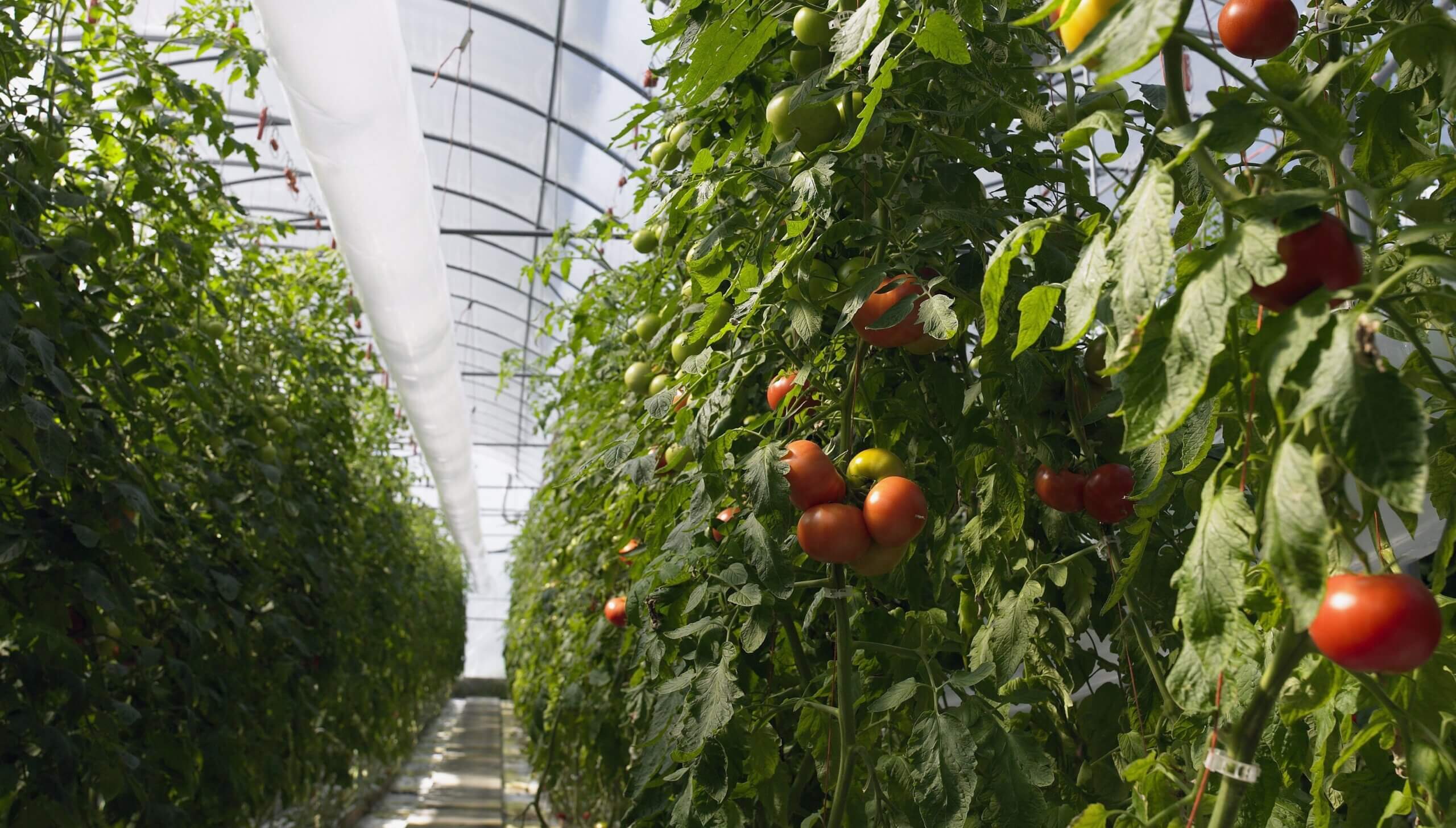The German Sustainable Development Strategy is currently being revised. The RNE demands that the global ecological footprint of our consumption be recorded in it. The data and methodologies are there.

Growing tomatoes in the greenhouse: A sustainable food system is a basic prerequisite for a sustainable economic model. Photo: © RNE
The ecological footprint has been a handy figure since it was devised in 1994: A single figure can be used to show how much space a country takes up through its consumption of food, energy and raw materials. In the German Sustainable Development Strategy, this aspect has so far played a subordinate role: there is the indicator 8.1, which measures total raw material productivity in relation to GDP. It thus answers the question of whether less and less abiotic and biotic raw materials as well as plant material must be taken from the environment for domestic consumption, domestic investments and exports. In the indicator report of the Federal Statistical Office, a positive trend is emerging here up to the year 2016, until then the data is sufficient.
But for the German Council for Sustainable Development (RNE), this is far too little. “It must become clear that the planetary boundaries have already been exceeded in essential areas (biodiversity, climate) and that this requires a substantial and absolute reduction in our consumption of resources, energy and land,” it writes in its latest analysis of the dialogue version of the German Sustainable Development Strategy, on which comments (German version only) could be submitted until 31 October. International contexts as well as ambitious yet appropriate time horizons must be taken into account.
The Federal Chancellery is leading the formulation of the new strategy. On its behalf, the Federal Statistical Office has revised an indicator in the current version of the dialogue: It is called “Global environmental impact of household consumption” and is to replace the previous indicator 12.1.b “Energy consumption and CO2 emissions of consumption”. The new indicator is divided into three values: It indicates how much energy and raw materials are used for the consumption of private households in Germany domestically and, via imported products, also abroad. The third value indicates the CO2 emissions caused at home and abroad.
The Federal Statistical Office calculates all of this with a so-called input-output analysis model, into which the national accounts flow. This indicates in monetary terms how value chains are interrelated. For example, what metal producers spend on the raw materials they process at home and abroad and what car manufacturers pay for the metal products. The actual flow and consumption of physical raw materials can also be calculated from the monetary flows. Read here how the underlying “environmental-economic accounting” works (German version only).
Area footprint missing
But does the indicator also correspond to what the RNE is calling for? “In order to achieve sustainable development and climate neutrality, we must not only reduce the absolute consumption of resources and energy in Germany, through Europe and in the world, and reduce CO2 emissions,” says RNE Deputy Chair Imme Scholz. The RNE additionally calls for the introduction of a real footprint that shows how much agricultural land the Germans use for their food and agricultural exports worldwide. After all, one third of the total production of German agriculture is exported. The underlying figures would theoretically also be included in the revised indicator 12.1.b. But for the RNE, a sustainable agricultural footprint is not enough. Rather a sustainable food system is a basic prerequisite for a sustainable economic model – and therefore a global land footprint is necessary for a public debate, which refers to the consumption of meat, fruit, vegetables, milk and other foods. It was only in October that the EU adopted its agricultural reform. Although the RNE has described it as a “respectable success”, it considers it insufficient. Therefore, Germany must make use of its national leeway in the implementation, says the RNE.
Against this background, the idea arose to introduce a separate indicator for the land footprint. The basis for this exists; the German Environment Agency presented a comprehensive study on this in 2017 (German version only). “With the proposed method, the extent of the land used for different human consumption patterns can be differentiated, as well as made transparent and internationally comparable,” it states. The Federal Statistical Office has also developed corresponding calculation methods in its methodological manual for environmental-economic accounting, but does not apply them regularly.
“From a sustainable development perspective, there is no reason why the German government should not introduce this important indicator for sustainable agriculture,” concludes Imme Scholz.